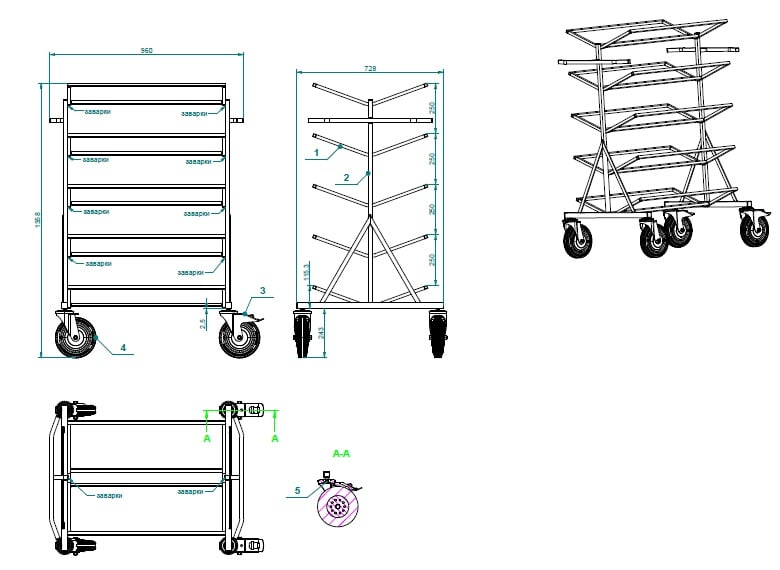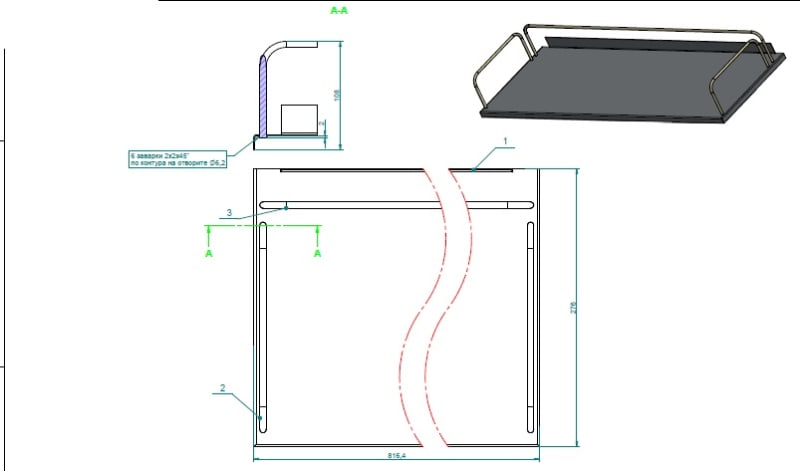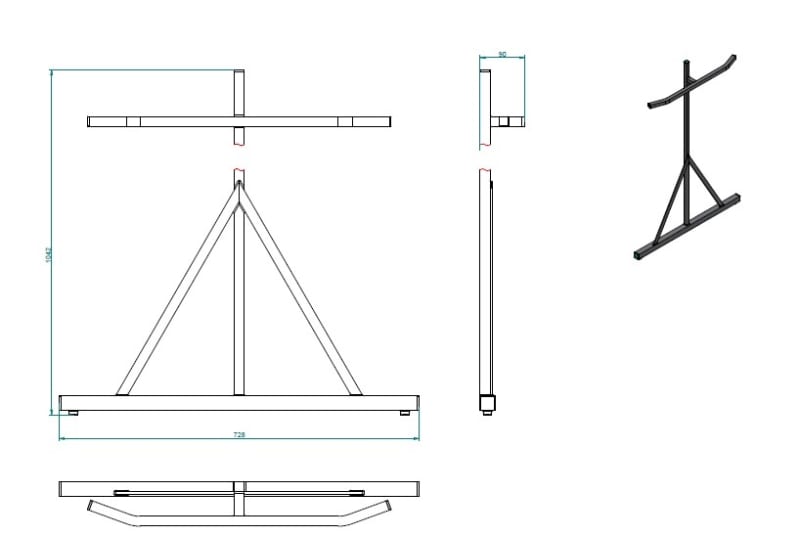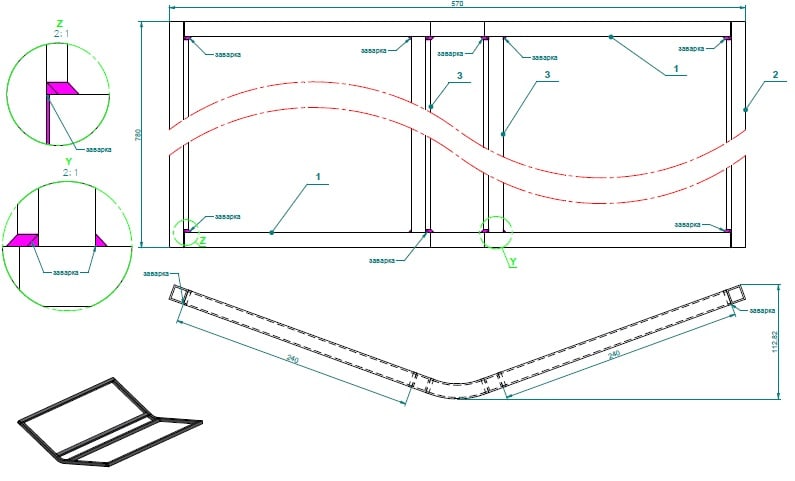Hello.
I'm asking for help.
Is there any way to optimize this design? The welding should be kept.
This is the cart on which the shelves are placed.
I have only one idea so far - remove one Bar on the "support_hor" component and move the second Bar to the center.
And perhaps to reduce the thickness of the structure profile wall. Now it's a square thin-walled profile.
I've got a default Catia v5 FEM module for structural analysis. But if I understood correctly help documentation, it can only solve linear problems, and for assemblies you need a nonlinear solver.
If I am wrong, please help me to make a calculation diagram for this cart. I think everything is clear here with the load - distributed vertical load on the part "Support_hor".
I don't know what boundary conditions should be set.
Maybe just fix the two lower horizontal bars?
Load on the shelves - I don't know yet, but let's assume 30-50kg.
The material of the frame is just galvanized steel.
My skill level in FEM - beginner, a couple of times made analysis for a simple sheet bracket in Catia v5.
Regards,
reutov-tv
I'm asking for help.
Is there any way to optimize this design? The welding should be kept.
This is the cart on which the shelves are placed.
I have only one idea so far - remove one Bar on the "support_hor" component and move the second Bar to the center.
And perhaps to reduce the thickness of the structure profile wall. Now it's a square thin-walled profile.
I've got a default Catia v5 FEM module for structural analysis. But if I understood correctly help documentation, it can only solve linear problems, and for assemblies you need a nonlinear solver.
If I am wrong, please help me to make a calculation diagram for this cart. I think everything is clear here with the load - distributed vertical load on the part "Support_hor".
I don't know what boundary conditions should be set.
Maybe just fix the two lower horizontal bars?
Load on the shelves - I don't know yet, but let's assume 30-50kg.
The material of the frame is just galvanized steel.
My skill level in FEM - beginner, a couple of times made analysis for a simple sheet bracket in Catia v5.
Regards,
reutov-tv




